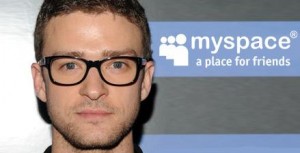The New Myspace: A Flailing Attempt at Resuscitating a Dead Social Network
By Andrew S In Social Bookmarking, Social Media, Social Media News Brief, Social Networking, Web 2.0In the
Then, in June 2011, singer-songwriter turned actor Justin Timberlake purchased MySpace for $35 million, alongside a company called Specific Media Group. Since that time, Timberlake and other representatives of the company have repeatedly stated that MySpace would be going under major renovations to reestablish the dying social network as a superpower website like it was in its heyday. Now, a year and half after the purchase, MySpace has been transformed into Myspace (without the capital ‘S’) and has gone live.
The new Myspace appears to be appropriating a lot of ideas from other social networks into its revival, with a focus on the music aspect that was the primary remaining force on Myspace in its later years, hence Timberlake being the new face of the organization. The new Myspace is intended to operate like the music industry’s own version of LinkedIn, while integrating the celebrity-user personal interactions available to Twitter, as well as featuring streaming music like Spotify. Mix these features in with a layout similar to Pinterest and a few remnants here and there of the old MySpace and you have what one would imagine to be a new, interesting social network.
Unfortunately, the new Myspace is off to a rough start. For starters, and perhaps most importantly, there is no functional mobile application (or even mobile functionality at all) for the social network, which is something that has become pivotal for all social networks in recent years. Considering there are 604 million monthly active users that use the mobile Facebook app (as of September 2012), leaving out a mobile app is a bizarre and enormous first mistake for Myspace.
The ‘revamped’ social network suffers from other problems as well; a very large cover photo (1024×768 pixels) is required to complete the look of one’s profile, sharing links lacks the dynamic functions of Facebook and Google Plus, the layout often lacks intuition, and some are saying there is too much focus on the music of Justin Timberlake and his collaborators. With the enormous blunder of not releasing a mobile app at launch, the clock is certainly ticking for the new Myspace to be officially seen as a resounding failure; considering how much Myspace’s target audience embraces instant gratification, it isn’t likely that the company has much time before their social network is once again forgotten in lieu of other, better websites.


No Comment